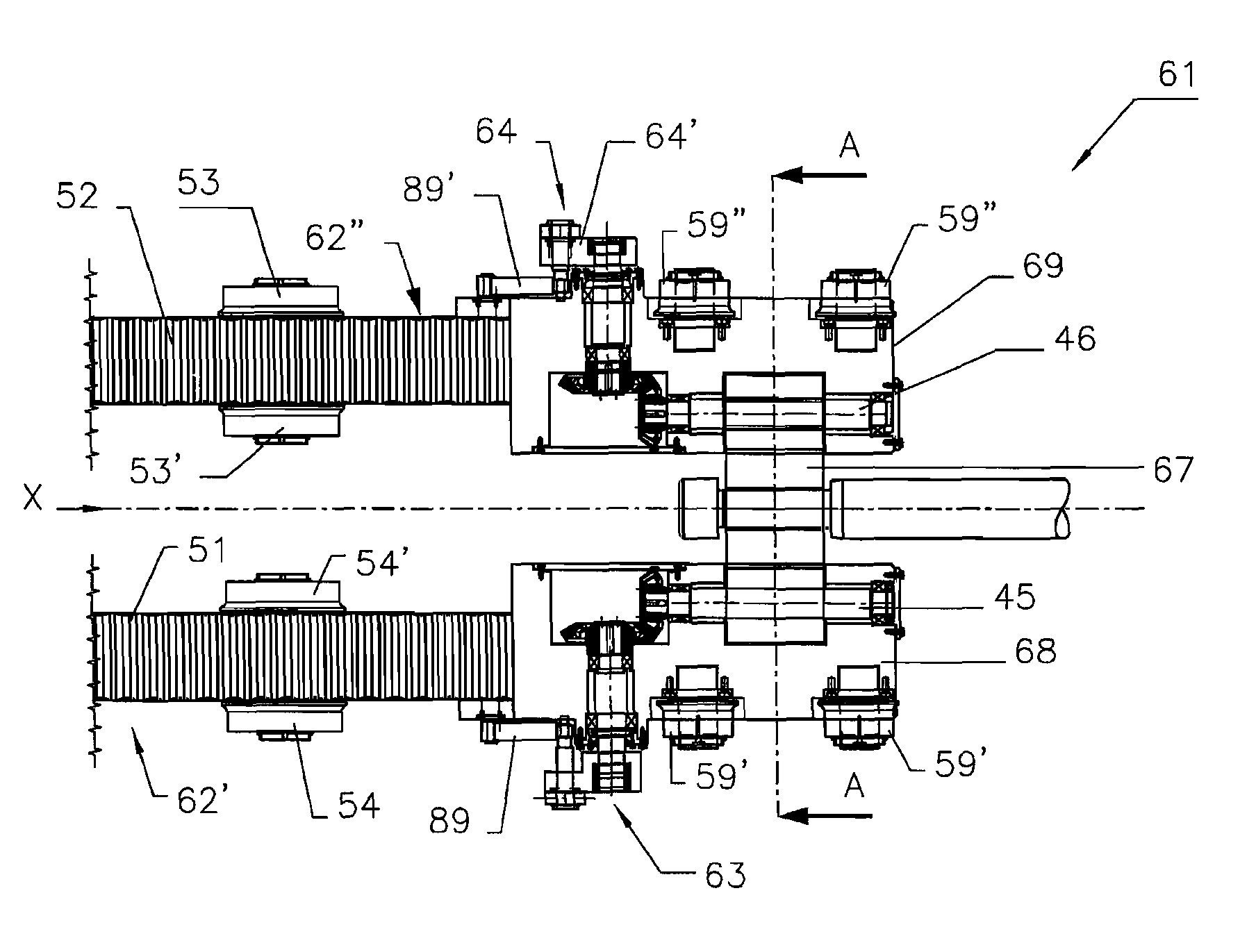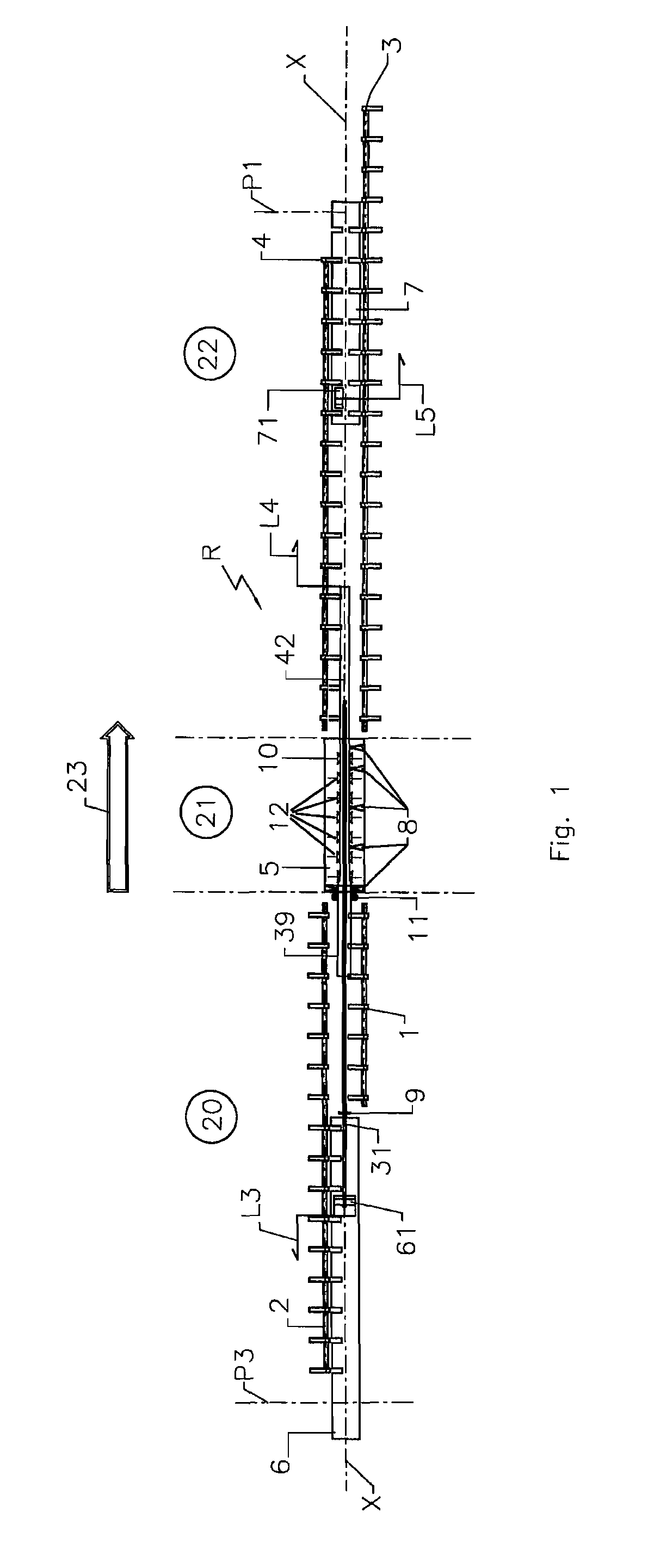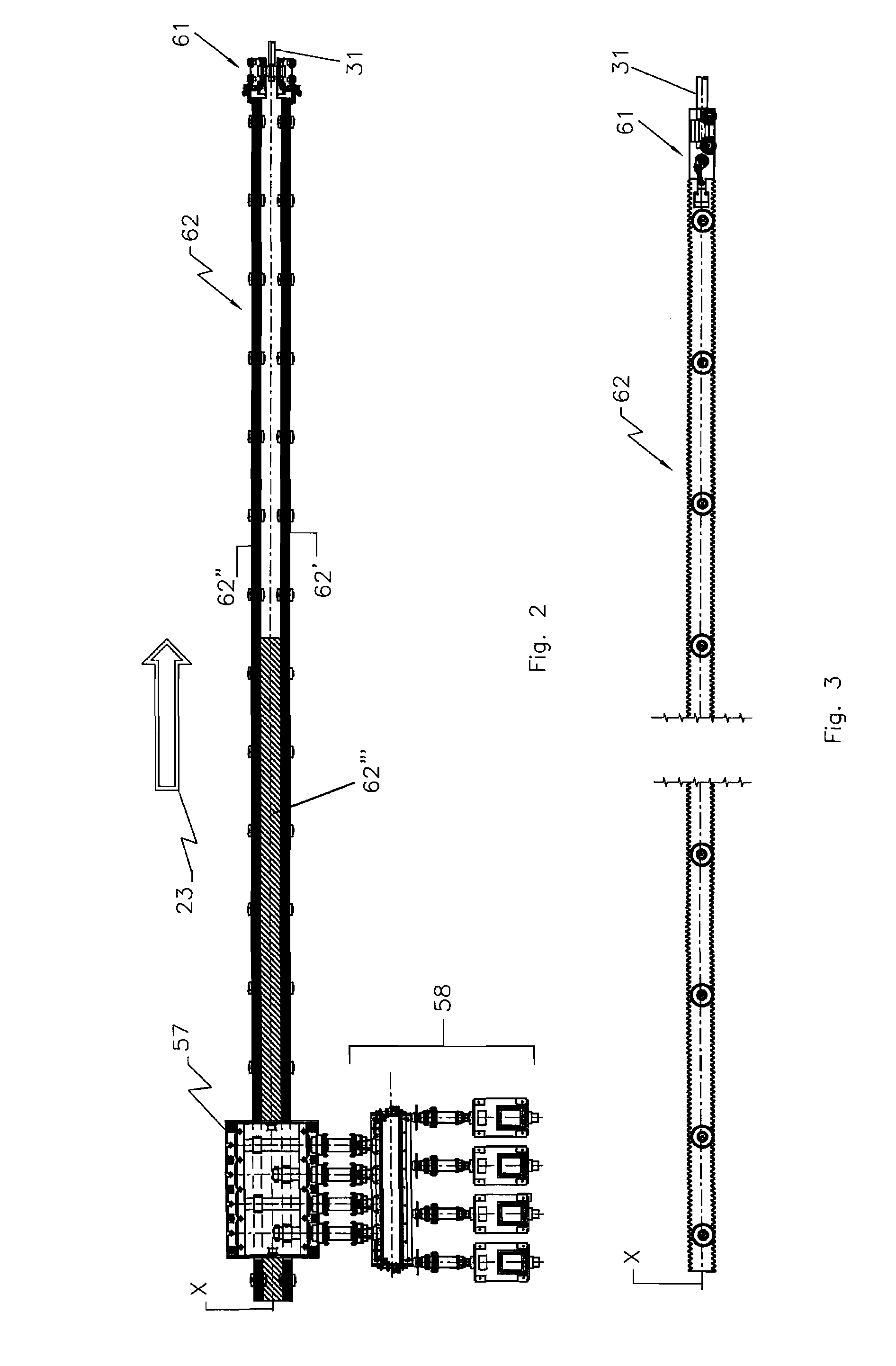Mandrel conveying device for a tube rolling mill
a conveying device and tube technology, applied in forging presses, manufacturing tools, forging/pressing/hammering apparatuses, etc., can solve the problems of reducing the production efficiency of the rolling mill, affecting the quality of the dimensional quality, and the type of the rolling mill is subject to various drawbacks, so as to achieve more cost-effective production and high rolling process productivity.
- Summary
- Abstract
- Description
- Claims
- Application Information
AI Technical Summary
Benefits of technology
Problems solved by technology
Method used
Image
Examples
Embodiment Construction
[0062]The figures show a preferred embodiment of a rolling plant, according to the invention, indicated globally by reference R, operating with a controlled speed mandrel, which may implement a continuous, controlled speed, high productivity mandrel tube rolling process comprising the conveying device of the invention. The rolling plant R defines a rolling axis X and a rolling direction 23 followed by the material to be rolled, commonly named pierced shell 39, and by the rolled tube 42. The plant R is conventionally split into an inlet area or side 20, in which the mandrel unloading device 2 for unloading the mandrel from rolling axis X and the pierced shell loading device 1 for loading the pierced shell on the rolling axis X are located, into a rolling area 21 proper, in which the multi-stand rolling mill 5 is located, and into an outlet area or side 22, in which the mandrel loading device 4 and the rolled tube unloading device 3 from the rolling axis X are located.
[0063]The loadin...
PUM
| Property | Measurement | Unit |
|---|---|---|
| length | aaaaa | aaaaa |
| length | aaaaa | aaaaa |
| speed | aaaaa | aaaaa |
Abstract
Description
Claims
Application Information
 Login to View More
Login to View More - R&D
- Intellectual Property
- Life Sciences
- Materials
- Tech Scout
- Unparalleled Data Quality
- Higher Quality Content
- 60% Fewer Hallucinations
Browse by: Latest US Patents, China's latest patents, Technical Efficacy Thesaurus, Application Domain, Technology Topic, Popular Technical Reports.
© 2025 PatSnap. All rights reserved.Legal|Privacy policy|Modern Slavery Act Transparency Statement|Sitemap|About US| Contact US: help@patsnap.com



